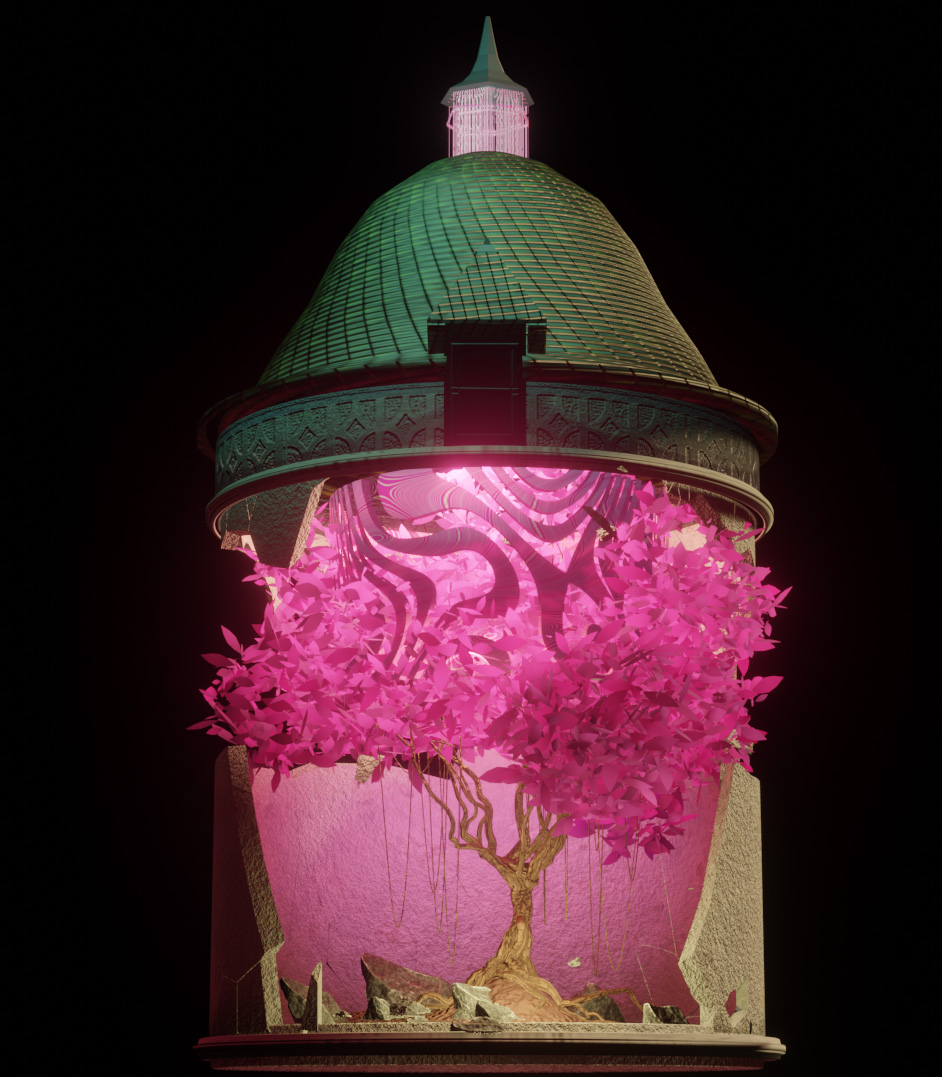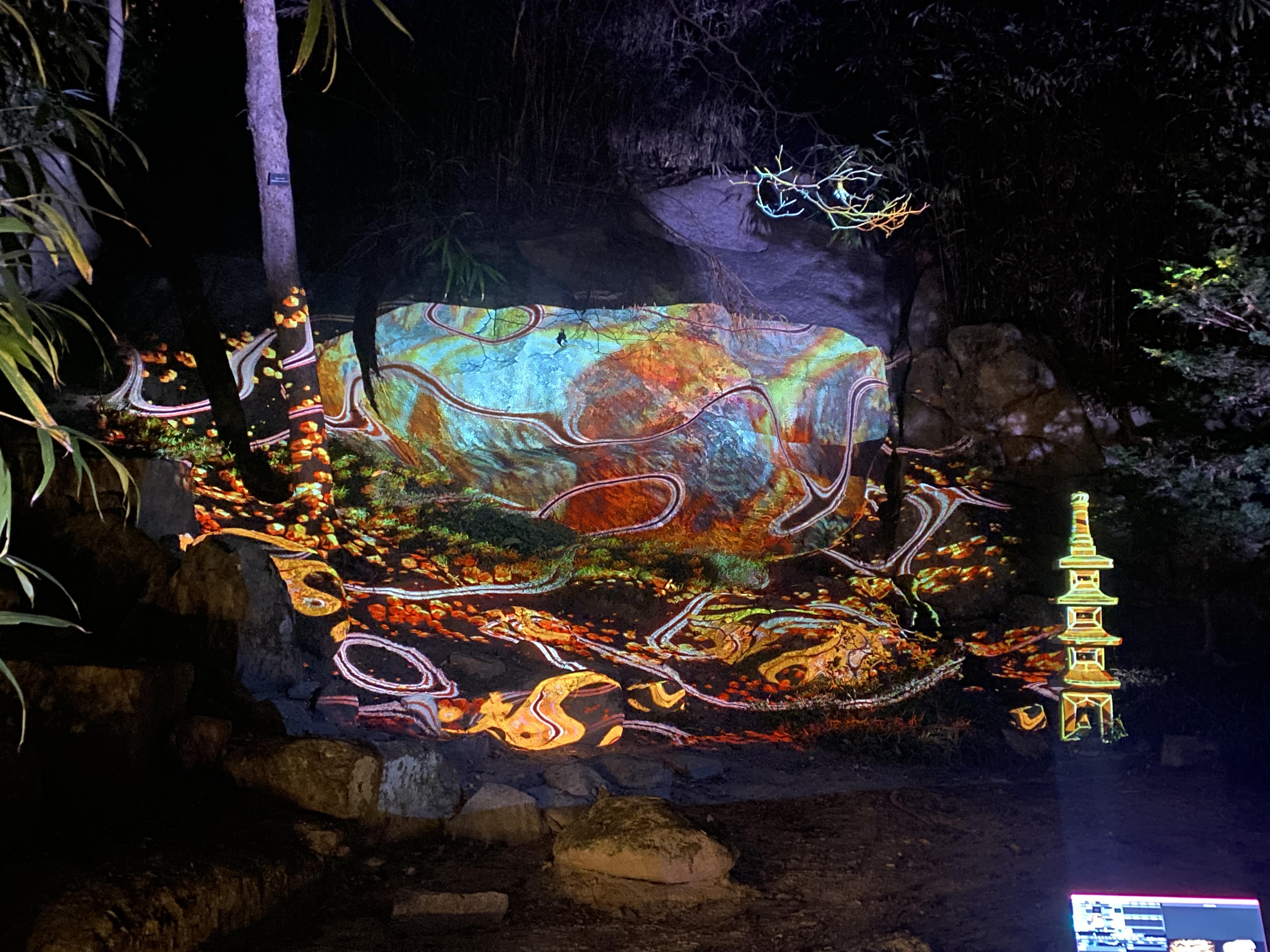Nature, Reimagined
Projection mapping adds graphics to annual Garden Glow event.

In 1893, James and Sallie Dooley, a wealthy couple from Richmond, VA, celebrated the completion of Maymont, a Gilded Age estate situated on 100 acres of land above the James River. Back then, the couple decided that when they died, the mansion, outbuildings, and grounds would be donated to the city of Richmond. Today, the Maymont Foundation oversees management, development, and promotion of the site, which includes a museum and park that are open to the public year-round.
[Epson Projectors, Strand Lighting Get Visitors In the Mood]
Last fall, Maymont hosted its fifth annual Garden Glow event, which ran for 18 evenings between October and November. Showcasing the natural beauty and historic architecture of the site, visitors were encouraged to wander the property and enjoy art installations and light shows that dotted the darkened landscape, creating the sense that the park was illuminated from within.

Among those commissioned for this event was Jeff Dobrow, a technology-based artist who specializes in immersive and interactive installations, live mixing and performance art, and projection mapping. Formerly a creative director in the advertising business, Dobrow began working with motion graphics in the 1980s. After a couple of decades, he began to tire of the corporate world, and started questioning where he would take his career next. It was at a Burning Man event that he got his answer.
“I walked over a hill at a Burning Man event, saw projection illuminating a stage, felt the music, energy, and the experience as a whole, and was immediately drawn to that,” Dobrow recalled. Within a year, he was designing visuals, mapping stages, and VJ-ing events.
“Mapping is a similar yet unique opportunity to form a relationship with the energy and past of the structure," he explained. "In particular, historic structures and their past lives lend a lot to think about, transform, and reimagine.”
New Look for Historic Tower
For Garden Glow, Dobrow created a series of lush, texture-rich animations that he projected onto the site’s historic water tower, as well as its Japanese garden and rock grotto. Maymont is known for its beauty and tranquility, as well as local wildlife, so he focused on the animals and plants in the area.
A daily selection of the top stories for AV integrators, resellers and consultants. Sign up below.
“They were seeking something that was engaging and reflected their open, accessible nature,” Dobrow said. “Using unexpected proportion, contrasting textures, and flowing motion, both pieces share perspectives of Maymont’s inhabitants in new, impactful ways.”

Dobrow juxtaposed the different textures of Maymont’s flora and fauna onto its architecture. He coated the water tower, for example, in squirrel fur. He reimagined owls, otters, and eagles, transmuting their own textures to the point where they became entirely new creatures.
“I wanted to focus on things that people that go there may not think about or may not notice,” he said. “Even if they do see it, [they may think] ‘well, that was a squirrel.’ But have you ever really looked closely—at a deep, micro level—at the fur of a squirrel? And what if the water tower was made of the fur of a squirrel? That’s an unexpected thing to think about.”
[Projection Mapping Turns Cincinnati into a Techno Cityscape of the Future]
Due to Maymont’s landscape and the textures themselves, the projection technology Dobrow used for Garden Glow needed to deliver rich color while remaining as unobtrusive as possible. “Footprint was important—we needed to be able to install something that wouldn’t have a huge impact on things,” he said. “I needed a compact, weatherproof solution, and a way to install it so it could work without a computer, and without cables hanging down that [people] would see out of the corner of their eye.”
Dobrow selected the Epson PowerLite 2250U, a 3LCD business-class projector that delivers 5,000 lumens. “This projector, in a weatherproof box containing a media player, was all that was needed at each location,” he added.
Textures and Terrains
According to Dobrow, one of the more challenging aspects of this project was mapping the rock grotto. For this, he applied the old-school technique of measuring the projection surface and building a 3D model upon which to project rather than just scanning the rocks with an app. “I use industry-standard 3D/2D animation software to create my pieces, always starting by creating a dimensionally accurate 3D model of the structure so I can have complete control over it,” he explained.
With buildings, this task is more straightforward, as their shapes and dimensions are generally much easier to measure. In the great outdoors, the landscape is always changing; even a light rainfall can transform the projection surface.

While Dobrow created many of the textures himself, AI generated others. He noted that advancements in Adobe Photoshop, as well as platforms like Stable Diffusion, are disrupting projection mapping. “Within six months you’re going to be able to sit at a computer, say some words, and it’ll generate an animation that can literally be put on a building, and possibly compete with me,” he mused.
[Viewpoint: What's Your Professional Mindset?]
That said, Dobrow would rather embrace the technology than fear it. “Once everybody’s done with the initial excitement," he argued, "it’s still going to come down to content—it always has, and it always will.” The same goes for projection mapping itself: “Within three or four years, mapping is going to be everywhere; people will not be excited by the fact that they’re seeing a building totally covered in animation. But everything will be fine because most of it will be marketing, and people will always know the difference between art and that.”
Dobrow recounts that for every project, his process involves a lot of discovery. During site visits he takes photos and measurements that will inform 3D modeling and texturing. He also uses this occasion to identify any issues he needs to address, such as ambient light and obstructions.
However, the discovery Dobrow conducts to inform his creations is arguably the most extensive. For Maymont, he wanted to learn about the park's history, which led back to the Dooley family. He also researched the different plants and animals on the grounds, and interviewed Maymont’s arborist and caretakers.
[First Class AV Accommodations]
“I also wanted to know about the relationship of the park with the community, and I wanted to know it from an energy standpoint," he noted. "Are people there fun? Your work here—what’s it like? What’s life like in this place? Energy, emotion, how people feel there for real—all that is important to me.”
For Dobrow, the opportunity to map the landscape at Maymont was a new experience. “It’s unlike any other building mapping or show that I’ve done, where there is this free-flowing open sandbox environment that people can [enjoy] at their leisure,” he said. “It is touching to be in nature and yet be surrounded with this type of glowing art. It tickles some senses.”
Carolyn Heinze has covered everything from AV/IT and business to cowboys and cowgirls ... and the horses they love. She was the Paris contributing editor for the pan-European site Running in Heels, providing news and views on fashion, culture, and the arts for her column, “France in Your Pants.” She has also contributed critiques of foreign cinema and French politics for the politico-literary site, The New Vulgate.
